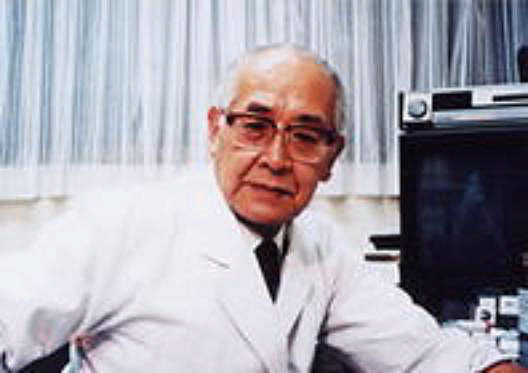You must first know what hair transplant is, to understand FUE!
Hair transplant is nothing but a process of removing hair from one part of the body which is called the donor site to a balding part of the body which is called the recipient site.
FUE (Follicular Unit Extraction) is the hair transplant technique where 1 or group of hair follicles i.e. follicular unit (can contain up to 4 hairs) is removed using a microneedle or a punch of diameter less than 1 mm, one by one.
It is extracted from the area where the hair growth is the strongest.
Then these follicular units or grafts are transplanted into balding region of the scalp.
It is one of the most popular and time-consuming technique of hair transplant.

Way back in 1988, Masumi Inaba from Japan, first described the FUE hair transplant wherein he showed the technique using 1 mm needle for extracting follicular units.
However, Dr. Woods from Australia was the first physician to demonstrate this technique in 1989.
FUE came into existence as an effort to address scarring in the donor area which was the major drawback of FUT (Follicular Unit Transplantation) procedure.
In Follicular Unit Extraction, individual grafts are extracted using a small micro punch, so a linear strip scar was avoided.
Due to this, the risk of long-term nerve damage, leading to chronic numbness and pain in the donor area, is significantly reduced with FUE as compared to FUT procedure.
Further, FUE provides an alternative to FUT when the scalp is too tight for a strip excision.
This also enables a hair transplant surgeon to harvest finer hair from the nape to be used at the hairline or for eyebrows.
Initially, FUE faced resistance due to a new set of surgical skills and lack of equipment to extract whole follicular units. However, with advancement in medical science they were soon able to develop the optimal instrument for FUE.
As a result, patients who have undergone both methods prefer FUE transplantation because it causes much less trauma and avoids scarring.
Why you should choose FUE hair transplant?
How many Grafts are needed for FUE hair transplant?
- Well, the number and type of graft you get depends on your hair type, quality, color, and the size of the area where you’re getting the transplant.
- In general, the number of grafts for FUE hair transplant in one sitting of approximately 6-8 hours is 2500-3000.
- If you have a higher level of baldness, then you might need another session. However, the doctor will decide how many grafts will be transplanted on each day.
Pre-conditions and Post-conditions of FUE hair transplant:
| Pre – conditions | Post – conditions | |
| Reasons for baldness according to which it will be determined whether to perform FUE hair transplant or not. | On the night of the surgery and for next few nights, sleep with the head elevated and place a cloth under your head if the donor area oozes. | |
| Alternatives to hair transplant surgery. | After surgery, it is required to follow the prescription of medicines as specified by your surgeon. | |
| Cost of FUE hair transplant | Cover your scalp with clothing when going out in direct sunlight for at least 2 to 3 weeks or as directed by the surgeon. | |
| The aptitude and experience of your hair transplant surgeon. | Details about how to shampoo and what to apply on your hair will be suggested by your surgeon. Approximately for 2 to 3 weeks you must follow the process | |
| As directed by your hair transplant surgeon, you might have to stop taking medications 1 week prior to your surgery because it can increase bleeding during the surgery. | Few months of follow-up, if specified by the surgeon, to monitor hair growth | |
| Avoid smoking for at least 1 week | Strenuous exercises should be avoided for a month and eating food that is hard to chew should also be avoided for a week. | |
| Avoid alcohol for at least 3 days prior to your surgery. | Abstain from alcohol (3 days at least) and smoking (2 weeks at least) for the duration specified by your surgeon. | |
| Wash your hair and eat breakfast but avoid coffee or any caffeinated drinks/beverages on the day of your procedure | You must avoid contact with your new hair after your surgery. | |
| Know about complexities, dangers and success rate of the surgery. | Finally! take care of your natural hair along with transplanted hair. |
What is the recovery time of FUE hair transplant?
- Right after surgery, many people prefer a rest period and that’s the right way to go about it.
- After surgery, time to recover is 1-6 days.
- Usually, there is no pain after the surgery.
Is FUE hair transplant successful?
- In most cases, the FUE hair transplant success rate is between 90 - 98%.
- The people who are non-smokers and those who do cardio the success rate may go above 95%
- For smokers the success rate is below 95%
Smoking decreases blood flow to the scalp by hardening and constricting blood vessels which in turn lessens the oxygen delivered to the newly transplanted hair follicles hence affecting the hair growth rate.
What are the side effects of FUE hair transplant?
- Expect some numbness and soreness of the donor area on the day of your surgery.
- Swelling may appear on the transplanted area after 2-3 days of your surgery.
- Be prepare for hair thinning known as shock loss but don’t worry it is natural.
- Itching sensation due to scab formation.
- Redness in the donor area can last up to 1 month but once your hair grows out it will be gone. It must not lead to infection, if it does please contact your hair transplant surgeon.
- In rare cases, post-operative hiccups have also been seen in hair transplant patients.
Note:If any side effect occurs other than these, please reach out to your surgeon!
What are the advancements in FUE hair transplant?
1. NeoGraft FUE:
- NeoGraft is the tool used for only extracting hair grafts from the donor area, not for implanting the grafts at the recipient area.
- The tool removes the hair follicles by using air pressure and suction.
- This tool requires human intervention to work i.e. this tool is handled by your hair transplant surgeon.
- Hence, the accuracy in harvesting the hair depends on your surgeon.
- Moreover, it reduces the extraction time and pulls graft smoothly and uniformly.
- It is less expensive than Robotic FUE.
2. Robotic FUE:
- Here, the extraction of the hair grafts is performed by a robot.
- It uses imaging technology where your surgeon monitors its processing from the computer screen connected to it.
- It aims to deliver safe and consistent performance and to provide 100% accuracy.
- The process of implanting the grafts is done by the surgeon.
- It can extract more grafts than NeoGraft FUE, about 1500-2000 in an hour.
3. Bio-FUE
- In Bio-FUE, regenerative cells are infused in the donor area
- The hair follicles are bathed in the protein rich serum to increase the yield of transplanted hair.
4. Unshaven/ Undetectable FUE
- FUE hair transplant can also be done without shaving the donor area.
- The degree of detection decreases at the donor area, but chances are that surgery will be noticed on the recipient area.
5. Long hair FUE
- The long hair from the donor area are extracted and they are implanted without cutting them short.
- It is best suited for the people who need to attend any important events like marriage within 15 to 20 days.
- After the shedding of old transplanted hair, the regrowth occurs same as normal FUE hair transplant technique.
6. Trivellini System
- Trivellini system is the tool which increases the speed as well as the efficiency of FUE technique of hair transplant.
- Trivellini system is the extraction tool which offers high graft harvesting speed that is, it can help surgeons to remove more than 1500+ grafts in an hour!
- The extraction is not done in rushed manner, it just means the grafts are quickly moved and implanted to their new location.
- Well, it is a time-consuming process and labor-intensive.
- However, it gives natural results with minimum or no side-effects.
- Moreover, this tool is efficient for performing long hair FUE and it shows better results for patients with curly hair.
7. Sapphire FUE Hair Transplant
In Sapphire FUE, the blades are designed in such a way that the incisions (holes) which are created on the donor area before implanting of hair follicles are of the same length as hair follicles. Therefore, this enables closer implantations of hair follicles.
- The gap between two implantations will be less as compared to the way FUE is normally done. This means there is a Hope for Dense Hair!
- Also, the shape allows implantation of hair follicles without dislocations or alteration in angle positions of the hair that is, there will no change in the angle at which your hair normally grows.
- Moreover, the incisions are so small that it enables them to recover faster and the surface of the scalp remains soft.
8. Ice Grafts
- Ice Grafts is all about how the hair graft is treated before transplantation.
- In this, the grafts are stored in the solution rich in biotin at a very cold temperature. The solution stabilizes pH level of the graft cells.
- This solution protects and feeds the grafts with vitamins while waiting for implantation.
- Using this method, there is a decrease in the rate of losing hair grafts as it is applied before the implanting the hair grafts.
- With the help of the ice graft treatment, the structure of the hair grafts gets strong and its lifetime is extended.
- Hence, storing the grafts at a very low temperature ensures the survivability and prevents it from damage.
If you are looking for hair transplant surgery outside India, then Turkey is an ideal choice. Turkey is famous for various hair transplant procedures like FUE, FUT, DHI, Female Hair Transplant, Body hair transplant etc.




